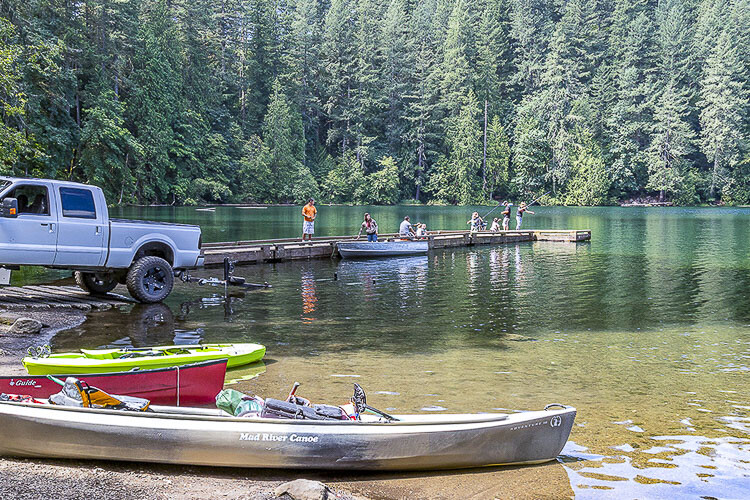
In spring and early summer, area lakes and rivers are still cold, and water may be moving quickly
VANCOUVER – Clark County Public Health’s summer swim beach monitoring is set to begin Tuesday (May 31). Public Health will monitor water quality at Vancouver Lake, Klineline Pond and Battle Ground Lake, checking the water bodies every two weeks for bacteria that could make swimmers sick. Public Health will also be monitoring the water bodies for harmful algal blooms that can pose a health risk to people and can be fatal to pets.
Before heading to a local lake or swim beach this summer, check the Public Health website for current advisories. People can also subscribe to Public Health’s weekly newsletter, In the Splash, to receive updates via email every Friday.
With the summer swim season approaching, Public Health is reminding people to take caution in and around water. In spring and early summer, area lakes and rivers are still cold, and water may be moving quickly. By taking a few simple steps everyone can stay safe while enjoying the water throughout the summer.
Know the water conditions
- Lakes and rivers in Southwest Washington are still cold enough to shock and immobilize even the strongest of swimmers.
- Rivers are high and swift from rain and snow melt and may be carrying debris.
- Avoid fast-flowing waters, including rivers and ocean beaches with riptides.
- Know your limits. Drowning often occurs when swimmers tire.
- Don’t swim alone.
In addition to monitoring river conditions, Public Health urges people of all ages to follow these tips for safe swimming and recreating in all bodies of water:
- Avoid distractions when kids are swimming or around water. Children should be supervised by adults anytime they’re in or around water. Supervision requires complete attention, even if another adult is present. Drowning can happen swiftly and silently.
- Teach children how to swim. Enroll children in swim lessons when they are ready. Early and often swim lessons will teach children the skills needed to stay safe while in and around water.
- Wear a life jacket. Children, teens and adults should wear life jackets while boating, using a personal watercraft, inner tubing or while using other water sports equipment. Life jackets should also be worn while swimming in lakes, rivers or the ocean. By law, children 12 years and younger must wear a U.S. Coast Guard-approved life jacket or vest on all vessels 18 feet or smaller.
- Avoid alcohol and marijuana use when swimming or boating.
- Don’t dive into shallow water or jump off bridges or cliffs.
- Swim in designated swimming areas only. Signs will be viewable letting you know when and where it’s safe to swim
Protect people and pets from harmful algal blooms
Cyanobacteria, or harmful algal blooms, have been known to occur at several water bodies in Clark County. These blooms may produce toxins that are harmful to animals and people. Pets, especially cats and dogs, are inquisitive and may not hesitate before swimming or drinking water, even if algae is present. Animals may also lick algae caught in their fur after being in the water or eat dried clumps of algae along the shore.
Public Health monitors local water bodies with reported algal blooms. Public Health will collect weekly water samples from water bodies with algal blooms to test for cyanotoxins and will issue advisories if toxin levels are above the recreational guidance established by the Washington State Department of Health.
Here are some tips for avoiding exposure to harmful algal blooms:
- Do not drink, wade, or swim in water that looks discolored or appears that algae may be present. Learn more about harmful algal blooms on the Public Health website.
- Look for posted advisory signs indicating a harmful algal bloom has been reported and find details about the advisory on the Public Health website.
- Check for visual signs of a bloom. Water can look like green or blue paint has been dumped in the water, creating the appearance of scum or soup.
- Never let your dog eat scum or algae.
- Always shower after water contact and wash pets with clean water.
- When in doubt, stay out! Cyanotoxins are released as algae cells die off. So even after a bloom has dissipated, toxins may still be present.
Anyone who has contact with water known to have cyanobacteria and/or cyanotoxins, should rinse off with clean, fresh water as soon as possible. Anyone who might have been exposed to cyanobacterial toxins, especially those experiencing symptoms, should seek medical treatment right away.
Information provided by Clark Co. WA Communications.




